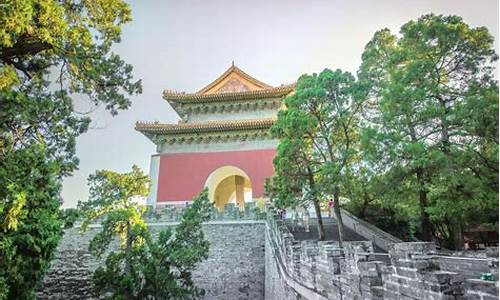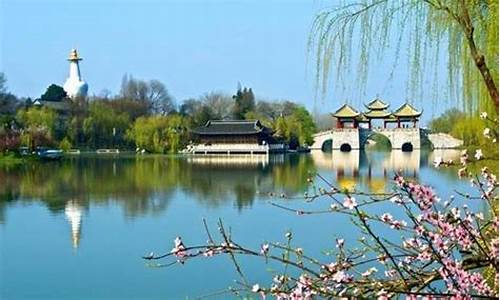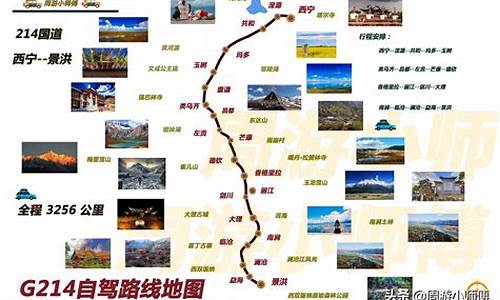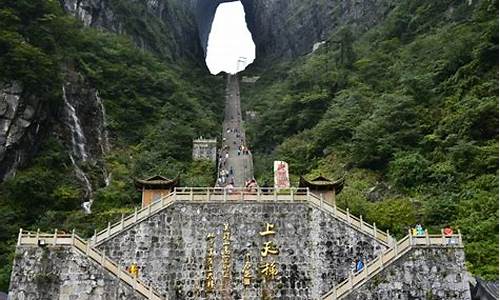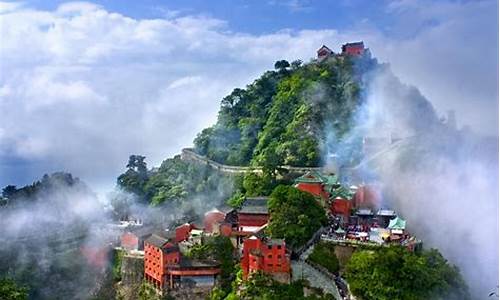西安旅游攻略英语作文80词_西安旅游攻略英语作文80词左右
好久不见了各位,今天我想跟大家探讨一下关于“西安旅游攻略英语作文80词”的问题。如果你还不了解这方面的内容,那么这篇文章就是为你准备的,请跟我一起来探索一下。
1.???????ι??????????80??
2.关于西安三日游的英语作文全品学练考
3.陕西旅游景点介绍的英文 陕西旅游景点英语介绍
4.有关西安旅游的英语作文,在线等,急,50分
5.请以《我的暑假》为题写篇约80词的英语作文,内容要与去西安旅游有关,并介绍一些著名景点

???????ι??????????80??
您好,以下是本人写的一篇去西安旅游的英语作文,希望对您有帮助:
Last month I just came back from Xi'an, where I went for a trip. Xi'an is a beautiful city with lots of famous places of interest. I saw the famous terra-cotta warriors, which is amazing. I also went to the ancient Drum Tower. Despite the weather is windy, I tried some of the traditional snacks in Xi'an. The food was so delicious and I liked it a lot. The trip was so fun that I enjoyed it very much. It was my first time in Xi'an, and I think I will go back again in the future.
关于西安三日游的英语作文全品学练考
介绍西安 英语作文100词左右
Hi, my name is xx. I am a xi 'an child. My hometown is very beautiful. My hometown is the famous wild goose pagoda, tower and datang west city, etc. My hometown is one of the world's four big ancient capital and among the of the ancient capital of China. Wele to my hometown xi 'an
嗨,我叫xx。我是一个西安小孩。我的家乡很美丽。我家乡有著名的大雁塔,钟楼和大唐西市等。我的家乡是世界四大古都之一和居中国古都之首。欢迎来到我的家乡西安
很努力的,,给个分,,,。
介绍中国英语作文100词左右①中华人民共和国是一个有中国特色的社会主义国家。它是一个发展中国家。
②中国位于亚洲的东部,有许多邻国。北面和东北面有蒙古,俄罗斯和朝鲜;南面有越南、寮国、泰国和菲律宾;西面和西南面有缅甸、印度、尼泊尔、不丹和巴基斯坦;东面有日本,与中国隔海相望。
③中国幅员辽阔,有九百六十万平方千米。
④它有34个省、直辖市和自治区。首都是北京,位于华北。
⑤中国是世界上最大的国家之一。现在,它有12多亿人口,占世界人口的四分之一。
China
The People's Republic of China is a sociali *** country with its own characteristics. It is one of the developing countries.
China lies in the east of Asia. It has a number of neighboring countries. To the north, northeast and northwest are the Mongolia, Russia and Korea. To the south are Vietnam, Laos, Thailand and the Philippine. To the west and southwest are India, Burma, Bhutan, Nepal and Pakistan. To the east is Japan, which faces China across the East China Sea.
China is a country with a vast territory①. It has an area of over 9,600,000 square kilometers. It consists of 34 provinces, autonomous regions②, and municipalities directly under the Central Covernment③. Beijing, which is situated in the North China, is its capital.
The People's Republic of China is one of the largest countries in the world. Now it has a population of more than 1.2 billion, making up a quarter of the world population.
介绍德国的英语作文100词左右Germany (German:Deutschland IPA:[?d?t?land]),officially the Federal Republic of Germany (German:Bundesrepublik Deutschland (help路info),IPA:[?b?nd?srepubli?k ?d?t?land]),is a country in Western-Central Europe.It is bordered on the north by the North Sea,Denmark,and the Baltic Sea,on the east by Poland and the Czech Republic,on the south by Austria and Switzerland,and on the west by France,Luxembourg,Belgium and the Netherlands.
Germany is a democratic parliamentary federal republic of 16 states (Bundesl?nder).The country previously consisted of several sovereign states with their own history,culture,and religious affiliation.Germany was first unified as a nation-state amidst the Franco-Prussian War in 1871.
The Federal Republic of Germany is a member state of the United Nations,NATO,the G8 and the G4 nations,and is a founding member of the European Union.It has the largest population and largest economy of all European Union member states.[1] As a modern great power,[2][3] Germany is the world's third largest economy (after the United States and Japan),the world's largest exporter of goods,and the world's second largest importer of goods.[4] Germany currently holds the rotating presidencies of both the EU and the G8.
Germany has the largest population in Europe,after the European parts of Russia,and is seventh in area.The territory of Germany covers 357,021 km? (137,850 mi?),of which land makes up 349,223 km? (134,835 mi?) and water makes up 7,798 km? (3,010 mi?).Elevation ranges from the mountains of the Alps (highest point:the Zugspitze at 2,962 m (9,718 ft)) in the south to the shores of the North Sea (Nordsee) in the north-west and the Baltic Sea (Ostsee) in the north-east.Beeen lie the forested uplands of central Germany and the low-lying lands of northern Germany (lowest point:Wilstermarsch at 3.54 metres (11.6 ft) below sea level),traversed by some of Europe's major rivers such as the Rhine,Danube and Elbe.[25] Because of its central location,Germany shares borders with more European countries than any other country on the continent.Its neighbours are Denmark in the north,Poland and the Czech Republic in the east,Austria and Switzerland in the south,France and Luxembourg in the south-west and Belgium and the Netherlands in the north-west.
Geography and climate
The scenery in the Alps of southern BavariaMost of Germany has a cool,temperate climate in which humid westerly winds predominate.The climate is moderated by the North Atlantic Drift,which is the northern extension of the Gulf Stream.This warmer water affects the areas bordering the North Sea including the peninsula of Jutland in north Germany and the area along the Rhine,which flows into the North Sea.Consequently in the north-west and the north,the climate is oceanic; rainfall ours year round with a maximum during summer.Winters there are mild and summers tend to be cool,though temperatures can exceed 30 掳C (86 掳F) for prolonged periods.In the east,the climate is more continental; winters can be very cold,summers can be very warm,and long dry periods are often recorded.Central and the southern Germany is a transition region which varies from moderately oceanic to continental.The maximum temperature can exceed 30
高中英语作文 介绍西安 150词左右Xi'an has a rich history of cultural significance.The Lantian Man was discovered in 1963 at Lantian County (蓝田县; pinyin:Lántián Xiàn),just 50 km southeast of Xi'an.The findings dates back at least 500,000 years before present,it followed the discovery of 6,500 year old Banpo (半坡) Neolithic village in 1954,just on the outskirt of the city proper.
Xi'an bee a cultural and industrial center of China in 11th century BCE,with the founding of the Zhou Dynasty.The capital of Zhou was established in Fēng (沣/沣) and Hào (镐/镐),both located just west of contemporary Xi'an.Following the several century long Warring States Period,Qin Dynasty (221-206 BCE) unified China for the first time and the capital was Xianyang (咸阳),just northwest from modern Xi'an.Before his death,Emperor Qin Shi Huang ordered the construction of the Terracotta Army and his mausoleum just east of Xi'an.
介绍海蒂拉玛的英语作文100词左右我们家就像一个调色盘,盘子里有各种各样的颜色。爷爷是红色,奶奶是蓝色,爸爸是紫色,妈妈是绿色,我是橙色。我们组成了一幅美丽的画儿。
为什么说爷爷是红色呢?因为爷爷平时乐观开朗,整天乐呵呵的,爷爷常常哼著自编的小曲。他和我都是小品迷、歌曲迷,赵本山的小品和一些流行歌曲都是爷爷最爱看的节目。红色代表着热闹,所以说爷爷是红色的,最恰当不过了。
奶奶是蓝色。蓝色代表海阔天空。每当爸爸妈妈说我时,跑到奶奶身旁,就立刻“海阔天空”了。而且奶奶能够包容别人,所以我说奶奶是蓝色。
妈妈是绿色。只要妈妈一回家,我就有一种温馨祥和的感觉。每当我遇到困难,只要想到妈妈对我的殷切期望,眼前就像出现了一片辽阔的大草原,信心倍增。自己好像变成了一匹骏马,宾士在一望无际的原野上。
每当我做错了什么,爸爸总是严厉地批评我,此时我心里非常害怕,所以我说爸爸是紫色。而且紫色很难和其他的颜色搭配,但紫色是蓝色和红色的调和色,我爸爸就“外冷内热”的人。所以说他是紫色一点儿也不错。
我代表着橙色。橙色象征著初升的太阳,大家都说我朝气蓬勃,活泼可爱。我喜欢橙色,还有一个原因,那就是我最喜欢吃橙子。所以我是橙色。
在我们这个五彩之家里,红橙蓝绿紫都很重要。如果没有了红色,就会显得冷清;如果没有了绿色,就缺少了一份安逸;如果没有了蓝色,就会少一份安宁;如果没有了紫色,画面就会过度明亮;如果没有了橙色,就会失去了活力。我们家这幅画就这样,“一个都不能少”。
我爱我家!
有介绍西安的英语作文吗?100字左右
Xi'an is a beautiful city with a very colorful history.There are so many famous buildings in xian,such as clay sulelievs,Banpo village museum and so on.If one day you e to Xi'an,you'd better visit some places of interest,so that you can learn more knowledges about this city.At last,I'm sure that you can have a great time in Xi'an。
英语作文 100词左右。 介绍自己Hello, my name is , I am years old, my biggest interest is sports, I like running, basketball, surfing the Inter I like about you? Primary school, I often participate in the school choir, but also the winning schools, teachers are like me, often praised me in class, the students and I get along very well. But sometimes I am Fanlao, because my academic record is not good, although my parents do not always call me。
英语作文100词左右My hobby is lisetening to music. I like listening to music best.Because listening to music makes me relaxed.When I am tired,I will listening some quiet music,that makes me fall asleep very quickly.My favorite music is the music that has good lyrics.Good lyrics can also make me learn Chinese or English well I love listening to music.I will keep this hobby forever。
Beijing, the capital of People's Republic of China, the central municipality, National Center City China, Chinese politics, culture, education and international exchange center, while the decision-making centers and management centers in China's economy and finance. Beijing is located in the northern end of the North China Plain, southeast connected with Tianjin, the rest is surrounded by Hebei Province. Beijing has built more than 3000 years of history of the capital city and the history of 850 years, is one of "China's four ancient capitals", with some international influence, which first appeared in the literature of the name "thistle." Beijing since the Yuan, Ming blend of Chinese culture, has many historical sites and cultural landscapes, is the world's largest city has the world's cultural heritage. Beijing is also one of the most rainfall in North China region. The historic International Higher university, Peking University, Tsinghua University, also located in Beijing.
famous tourist sites
Beijing is the world's the world's heritage most of the city, is the world's first geological park has the world's capital cities. Beijing is rich in touri *** resources, opening up more than 200 tourist attractions, the world's largest palace of the Forbidden City, Temple of Heaven Temple of Heaven, Beihai Royal Garden, the Royal Palace and the Old Summer Palace gardens, as well as the Badaling Great Wall, Mutianyu Great Wall and the World largest courtyard Prince Gong's Mansion and other attractions. The city's total cultural relics 7309, 99 national key cultural relics protection units (including the Great Wall and the Grand C *** in Beijing), the 326 municipal units, five national geological parks, 15 national forest parks. World Heritage: the Forbidden City, the Great Wall, Zhoukoudian, the Temple of Heaven, the Summer Palace, Ming Tombs. Geoparks: Beijing Fangshan World Geological Park. National Scenic Area: Badaling - Ming Tombs, Shihuadong. Chinese historical and cultural street: Imperial College Street, pipe Byway. Historical and cultural towns in China: Miyun County Gubeikou town. Chinese historical and cultural village. Mentougou: dining hall town Chuandixia, Ling monastery town water village, Longquan Town Qucun glass.
history and culture
Zhou became the capital of the State of Yan, one of Zhou vassal state when. Since Jin from being the capital of ancient China are. Since the Yuan Dynasty, became the capital of the whole of China. Since the beginning of the Ming emperor massive expansion of Beijing, the Ming Dynasty Beijing became the capital of a Han dynasty. Qing Dynasty in Beijing on the basis of the continuation of the Ming and carried out some renovation and expansion. To the Qing Dynasty Beijing became the world's largest city. Beijing has built more than 3000 years history of the city the capital of history and 859 years. Since the Qin and Han Dynasties in Beijing it has been a military and mercial center in northern China. 1860, British and French troops into Beijing; in 1900, Boxer Rebellion into Beijing again, the beautiful city of Beijing has been very severely damaged and looted, a large number of cultural relics were looted military aggression and bad people. After the Revolution in 1911, the first year Jan. 1, the ROC capital in Nanjing, capital Beijing in March the same year, seventeen years until the Chinese Nationalist Crusade captured Beijing, Chang Tso-lin defeated back to the northeast, the Northern government to step down. Republic of China at the beginning of Beijing's local institutional Rengyi clear system, called Shuntian. In three years until, changed Shuntian Jingzhao place directly under the Central Government of the Northern Government. During this period, Beijing built a tram system, and a number of modern cultural and educational institutions, such as Qinghua University, Beijing University, Beijing University, Fu Jen Catholic University, Peking Union Medical College. ? 1937 after seven seven incident, Peking was oupied by Japan. Pseudo interim government in the establishment of the Republic of China, and the Peking renamed Beijing. August 21, 1945, the Japanese army invaded Beijing surrendered, renamed as Peking. January 31, 1949, People's Liberation Army entered Beiping, to achieve the liberation of Beijing. September 27 the same year, Chinese People's first plenary session of the "People's Republic of China on the Capital, Calendar, National Anthem, Flag of resolution," Peking renamed Beijing. October 1, 1949, the Central People's Government of People's Republic of China was proclaimed in Beijing.
religious culture
Beijing not only brings together the famous five main religions (Taoi *** , Buddhi *** , Islam, Christianity, Catholici *** ) in the world, and these five religious architecture and culture has its own characteristics. For example, we are now traveling towards the mound on the road, just a few kilometers, it is inhabited by four religious (ChaoYangMenWai of dongyuemiao, Dongsi Mosque, Fusi, Guangji, White Pagoda Temple) in building, while in southern Beijing Declaration, to Beijing to memorate the founding of the city as the center pillar of the surrounding area, it can be said to gather many famous places of the five major religions. These options are available: Buddhist temple, Fayuan, Changchun Temple; Baiyun Taoist; Christian church Zhushikou; Xuanwumen Catholic Church (South Church); Islam Niujie Mosque; this "religious culture zone" in the world big cities are rare, reflecting the Orient "and" culture, reflecting the unique charm of Beijing urban culture, it embodies the great cohesion of the Chinese nation.
Customs and taboos
Beijing is the seat of the ancient capital, historically, due to a long period of the Central Plains and Northern ethnic interchange, and therefore has a blend of cultures, customs and languages of many peoples. Over time, it produces a rich local characteristics of Beijing customs. For example, set drink in one of Beijing temple fairs and the like.
festival
Beijing's traditional festivals in various forms, rich in content, is an integral part of Chinese history culture. Far from these popular holiday custom, we can clearly see the wonderful pictures of ancient people's social life. Features festivals such as Longqingxia Ice Festival, Fragrant leaves festival, Baiyun Temple, Dongyue temple and so on.
1 My Weekends
I have happy weekends.I am busy with my lessons during weekdays,so I usually do something at the weekend to relax myselve.Sometimes I go shopping with my mother.I buy something to eat and some school things.Sometimes I go to the park to have fun with my clas *** ates.We often dance and play games there.And I also play chess at home with my father from time to time.I often beat my father in the game.
Moreover,I go back to school to do some exercises,such as running and playing football together with my clas *** ates.
陕西旅游景点介绍的英文 陕西旅游景点英语介绍
Last Chinese New Year. I and my father, mother, grandparents, brother went to xian by bus. In the morning we came down the mountain. I saw wooded mountains, wild flowers bloom. We climb up the hill along the mountain path. Come halfway up the mountain, I feel a little tired,it began to rain,My West Lake silk umbrella missed,. Dad said to me,“tingting, don’t do anything halfway.”at last,So I insisted reached the top, the top of the scenery so beautiful.We were flying kites, I was thirsty, my mother bought me a bottle of water, .finally we went home.finally,Since then, I've kept the umbrella。i was very happy
有关西安旅游的英语作文,在线等,急,50分
西安英文景点介绍
西安英文景点介绍
西安,古称长安、镐京,现为陕西省省会、副省级市、国家区域中心城市(西北),是国务院批复确定的中国西部地区重要的'中心城市,下面就是我为大家带来的西安英文景点介绍,希望能够帮到大家!
西安英文景点介绍
大雁塔 Great Wild Goose Pagoda 小雁塔 Small Wild Goose Pagoda 秦始皇兵马俑博物馆
Museum of Emperor Qinshihuang’s Tomb Figures of Soldiers and Horses 秦始皇陵 The Tomb of Emperor Qinshihuang 鼓 楼 The Drum Tower 钟 楼 The Bell Tower
西安城墙 The Xi’an Circumvallation 华清池 The Huaqing Pond 法门寺 The Famen Temple
黄河壶口瀑布 The Huanghe Hukou Waterfall 大唐芙蓉园 Lotus palace of Tang Dynasty Xi'an: Big Wild Goose Pagoda (Dayanta)
The Big Wild Goose Pagoda (Dayan Ta),is a Buddhistpagoda built in 652 AD during the Tang Dynasty and originally had five stories.The original construction of rammed earth with a stone exterior facade eventually
collapsed five decades later but was rebuilt by Empress Wu Zetian in 704AD who added five more stories. A massive earthquake in 1556 heavily damaged the pagoda and reduced it by three stories to its current height of seven stories One of the pagoda's many functions was to hold sutras and figurines of the Buddha that were brought to China from Indiaby Xuanzang, a famous Chinese Buddhist monk, scholar, traveler, and translator.Xuanzang is a prominent Buddhist figure mostly known for his seventeen year overland trip to India and back, which is recorded in detail in his autobiography and a biography, and which provided the inspiration for the epic novel “Journey to the West”.
The pagoda is built on the premises of the Temple of Great Maternal Grace (Da Ci'en), originally built in 589 AD and then rebuilt 647 AD by the Tang Emperor Gaozong in memory of his mother EmpressWende. Before the gates of the temple stands a statue of Xuanzang. North Square of Big Wild Goose Pagoda
Surrounding Big Wild Goose Pagoda, the scenery is also quite charming, especially the square north of the Da Ci'en Temple. Covering about 110,000 square meters (131563 square yards) plus 20,000 square meters (23920.6 square yards) of water area, it holds many records: in Asia, it is the biggest Tang-culture square, the biggest fountain and waterscape square, and the largest-scale sculptures area. In the world, it has the most benches, the longest light-belt, and the largest-scale acoustic complex.
The entire square is composed of waterscape fountains, a cultural square, gardens and tourist paths. There you can taste real Chinese culture and traditions and fully enjoy the truly attractive views. With reliefs on the theme of the prosperous Tang Dynasty, 200-meter-long (656-foot-long) sculpture groups, 8 groups of sculpted figures, 40 relievos on the land, and 22 styles of musical fountains, it has become a must-see when you visit Big Wild Goose
The Museum of Qin Terra-cotta Warriors and Horses
One of the most significant archaeological finds in the world, this
16,300-square-meter excavation reveals more than 7,000 life-size terracotta figures of warriors and horses arranged in battle formations. (3 pits)
The terracotta warriors and horses, created about 2,200 years ago, were found in 1974 on the east side of the tomb of the First Emperor Qin Shihuang (259 BC - 210 BC) near Xi'an.
Emperor Qin Shihuang had Ying as his surname and Zheng as his given name. In 221 B.C., when he unified the whole country, named himself Shihuang Di and carried on the hereditary system.
To protect against harassment by the Hun aristocrats. Emperor Qin Shihuang ordered the Great Wall be built. The Bell Tower (Zhonglou)
Centrally located on the Xi'an. The original City Bell Tower was constructed in 1582 and situated in the west, but on its reconstruction in 1739, the tower was relocated to its present site. A Ming dynasty bell weighing approximately 14.76 tons hangs in the tower, but no longer chimes to inform residents of the time of day. Visitors have the chance to inspect up-close a number of smaller bells.
Although the site itself is more of a landmark than an attraction, it is frequently enlivened with local performances. Visitors interested in local music should visit the site in the morning and early afternoon.
Originally, the tower had a number of entrances, but today, it only has one accessible entrance located on Bei Dajie close to the Admission Ticket Office.
Xi'an: Drum Tower (Gulou)
The Drum Tower was built in 1380 during the early Ming Dynasty, and got its name from the hugedrum located within the building. In contrast to the Bell Tower ,where bell was stricken at dawn, drum was beat at sunset to indicate the end ofthe day.
There are twenty-four drums in the northand south sides of the Drum Tower . These drums standfor the Twenty-four Solar Terms, a form of weather
calendar created by theChinese in order to guide the agricultural production. The Xi’an Circumvallation
The Xi’an Circumvallation site is located at the center of xi’an city with the form of a rectangular. The circumvallation, with its wall height of 12 meters, bottom width of 18 meters and top width of 15 meters, consists of 4 city gates: changle gate to the east, anding gate to the west, yongling gate to the south and anyuan gate to the north. Its east wall has the length of 2590 meters, west wall of 2631.2 meters, south wall of 3441.6 meters and north wall of 3241 meters. It was constructed on the basis of the tang imperial city and under the strategic consideration of defense. The thickness of the wall is larger than its height and is very solid that cars can run on it. The existing circumvallation was built during
1373-1378 with the history of more than 600 years. It is one of the most
famous wall construction in China’s history after the middle ages as well as the most preserved ancient one in China. Small Wild Goose Pagoda
The Small Wild Goose Pagoda, sometimes Little Wild Goose Pagoda (Chinese: 小雁塔; pinyin: Xiǎoyàn Tǎ), is one of two significant pagodas in the city of Xi'an, China, the site of the old Han and Tang capital Chang'an. The other notable pagoda is the Giant Wild Goose Pagoda, originally built in 652 and restored in 704. The Small Wild Goose Pagoda was built between 707_709, during the Tang Dynasty under Emperor Zhongzong of Tang (r 705_710). The pagoda stood 45 m (147 ft) until the 1556 Shaanxi earthquake. The earthquake shook the pagoda and damaged it so that it now stands at a height of 43 m (141 ft) with fifteen levels of tiers.[1] The pagoda has a brick frame built around a hollow interior, and its square base and shape reflect the building style of other pagodas from the era.[1]
During the Tang Dynasty, the Small Wild Goose Pagoda stood across a street from its mother temple, the Dajianfu Temple. Pilgrims brought sacred
Buddhist writings to the temple and pagoda from India, as the temple was one of the main centers in Chang'an for translating Buddhist texts.[1] The temple was older than the pagoda, since it was founded in 684, exactly 100 days after the death of Emperor Gaozong of Tang (r. 649_683).[1] Emperor Zhongzong had donated his residence to the building of a new temple here, maintaining the temple for 200 monks in honor of his deceased father Gaozong.[1] The temple was originally called the Daxianfusi or Great Monastery of Offered Blessings by Zhongzong, until it was renamed Dajianfusi by Empress Wu Zetian in 690.
;
西安旅游景点英文介绍
Big Wild Goose Pagoda
Originally built in 652 during the reign of Emperor Gaozong of the Tang Dynasty (618-907), it functioned to collect Buddhist materials that were taken from India by the hierarch Xuanzang.
Xuanzang started off from Chang'an (the ancient Xian), along the Silk Road and through deserts, finally arriving in India, the cradle of Buddhism. Enduring 17 years and traversing 100 countries, he obtained Buddha figures, 657 kinds of sutras, and several Buddha relics. Having gotten the permission of Emperor Gaozong (628-683), Xuanzang, as the first abbot of Da Ci'en Temple, supervised the building of a pagoda inside it. With the support of royalty, he asked 50 hierarchs into the temple to translate Sanskrit in sutras into Chinese, totaling 1,335 volumes, which heralded a new era in the history of translation. Based on the journey to India, he also wrote a book entitled 'Pilgrimage to the West' in the Tang Dynasty, to which scholars attached great importance.
First built to a height of 60 meters (197 feet) with five stories, it is now 64.5 meters (211.6 feet) high with an additional two stories. It was said that after that addition came the saying-'Saving a life exceeds building a seven-storied pagoda'. Externally it looks like a square cone, simple but grand and it is a masterpiece of Buddhist construction. Built of brick, its structure is very firm. Inside the pagoda, stairs twist up so that visitors can climb and overlook the panorama of Xian City from the arch-shaped doors on four sides of each storey. On the walls are engraved fine statues of Buddha by the renowned artist Yan Liben of the Tang Dynasty. Steles by noted calligraphers also grace the pagoda.
As for the reason why it is called Big Wild Goose Pagoda, there is a legend. According to ancient stories of Buddhists, there were two branches, for one of which eating meat was not a taboo. One day, they couldn't find meat to buy. Upon seeing a group of big wild geese flying by, a monk said to himself: 'Today we have no meat. I hope the merciful Bodhisattva will give us some.' At that very moment, the leading wild goose broke its wings and fell to the ground. All the monks were startled and believed that Bodhisattva showed his spirit to order them to be more pious. They established a pagoda where the wild goose fell and stopped eating meat. Hence it got the name 'Big Wild Goose Pagoda'.
The Terracotta Army (Chinese: 兵马俑; Pinyin: Bīng Mǎ Yǒng; literally "military servants") or Terra-cotta Warriors and Horses is a collection of 8,099 life-size terra cotta figures
请以《我的暑假》为题写篇约80词的英语作文,内容要与去西安旅游有关,并介绍一些著名景点
Xian is the connecting point between the western Region of China and the Middle Region of China both geographically and socially. She is the gateway and communication axis for western provinces. Xian isthe biggest central city in the second European-Asia Continental Bridge-LongHai and LanXin Road, its economic strategic importance is naturally indicated. Because of its geographic and historic priority, Xian has become the number one commodise distribution center and goods exchange place in the whole Northwest Region of China. Besides, the rich historical culture treasure and advance arts and science resources have helped Xian seats top of the Six Ancient Capitals in China, as well as one of the four World Ancient Civilization Capitals.
Xian is the largest commercial and trade-hub, as well as the largest material distribution center in theMid-Western Region of northern China. As shown in a report in 1998, there are more than 100,000 commercial service networks, 435 consumption markets, and 485 various types of wholesale markets, and nearly 1,000 wholesale agencies.
Through fifty years development, Xian has already set up sordidindustry basement in certain areas. Aviation, aerospace, electronics, machinery, communications, instruments and meters, and electric power are typical industry in Xian. In some of these areas, the industries in Xian has not only reached the top level in China, but also has equaled to the world advance level.
Xian has formed a transportation network of air routes, railways and highways. Xian Civil Airline Service has opened 95 domestic airlines to 44 cities, two international airlines to Nagoya and Hiroshima in Japan and regio nal airlines to Hongkong and Marco. It also has opened direct lines to Okinawa and Fukuoka in Japan and Jidda in Saudi Arabia. Highways, first and second grade highways, as well as the under-construction first-grade highways and express ways continually increase the transportation capability of Xian. Post and Telecommunication also grow rapidly in Xian. Xian has opened direct dialing services to more than 190 foreign countries and regions and 900 Chinese cities and country towns. EMS has expanded to 94 countries and near 2,000 Chinese cities.
This summer holiday I had a travel to Xi An with my family.It is really a wonderful trip.Firstly,we went to The Museum Of Emperor Qinshihuang’s Terra. The Terracotta Army is so pageantry that I lost myself in it.Then we visit the The Big Wild Goose Pagoda.People could have a good view of the city from the top of this pagoda.The last day we went to The FaMen Temple.There are many curiosity about the buddha.Although the trip have finished,I would remember it forever.In a word, we all had a good time.
采纳吧采纳吧采纳吧~
好了,今天关于西安旅游攻略英语作文80词就到这里了。希望大家对西安旅游攻略英语作文80词有更深入的了解,同时也希望这个话题西安旅游攻略英语作文80词的解答可以帮助到大家。
声明:本站所有文章资源内容,如无特殊说明或标注,均为采集网络资源。如若本站内容侵犯了原著者的合法权益,可联系本站删除。



